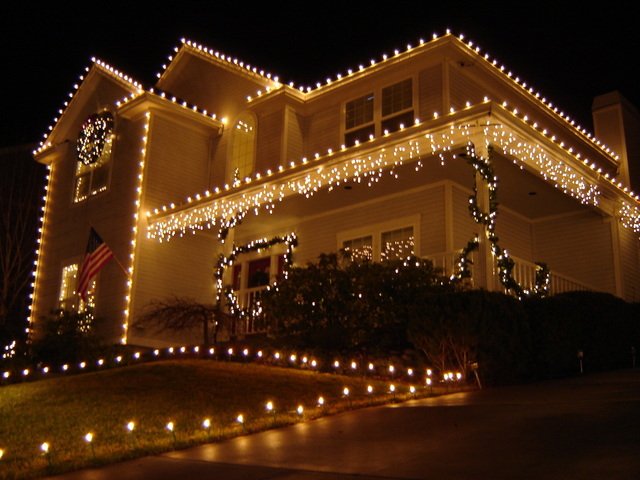Long Island, NY - December 3, 2015 - If you’re ready to satisfy your inner Clark Griswold and put up holiday decorations that can be seen from outer space, National Grid wants you to know that you can do so without adding dramatically to your energy bill.
Light-emitting diode (LED) decorative light strings have definite advantages over the incandescent versions because they use substantially less energy to produce the same amount of light. So, if you are thinking about chucking that tangled ball of light strings hiding in your basement and starting over, keep these cost comparisons in mind.
A string of 100 incandescent mini twinkle lights, burning six hours per day, will cost about 81 cents per month to operate, based on current electricity rates. That same 100 light string, using LED technology, would cost just 15 cents to operate. The C-7, or 1.5 inch bulbs, would cost about $10.17 for the month using incandescent bulbs, but just $1.02 using LEDs. The 2-inch C-9 bulb comparison is $14.24 for incandescent, and $2.03 for LED.
While LEDs usually cost more to purchase, the potential for savings over time is significant. LEDs are generally more durable as the bulbs are made of epoxy rather than glass, and can last as much as 10 years longer than standard lights without fading. LEDs also are safer to use as the bulbs remain cool to the touch no matter how long they have been on.
Here are some other efficiency and safety tips to keep the holidays healthy and affordable:
- Approved Lighting – Make sure your lights have a safety listing from a nationally recognized testing laboratory, such as the Underwriters Laboratories (UL). A safety approval seal means the lights have been tested and are safe to use. Use lights only as intended. Thoroughly examine all lights before putting them up, even newly purchased lights.
- Christmas Trees – If you have an artificial tree, make sure it’s been tested for flammability by the Underwriters Laboratories. To prevent electrical shock, never use electric decorations on artificial trees with metallic needles, leaves or branches. Instead, place colored spotlights above or beside the tree—never attached to it. Keep your natural tree well-watered to prevent bulbs from igniting dry branches. Keep extension cords and light sets away from the tree stand.
- Inflatables – Yard inflatables range from simple to extravagant. Operating some of these inflatables can be expensive. Larger displays consume anywhere from about 150 watts per hour to as much as 200 watts. At 10 hours per day, the total cost of electricity could be $10 per inflatable, per month.
- Don’t Overload – Don’t overload your electric circuits. Check your fuse or breaker panel to see how much your home can handle and stay well within limits, and string together only the number of lights recommended by the manufacturer.
- Avoid Shock – Make sure there’s a bulb in each socket. If a bulb has burned out, leave it in until you have a replacement.
- Outdoor Connections – Plug outdoor lights into Ground Fault Circuit Interrupters, which are available at hardware and electrical supply stores. If there is an electrical fault with a light string, GFCIs will automatically shut off the electricity well before any electric shock could occur. Also, cover outdoor plugs and joints with a layer of plastic wrap and electrical tape.
- Turn Off the Lights – Limit the time that lights are on. Wait until dark to turn on your holiday lights; then, turn them off before you go to bed. Six hours or less of daily use is a good goal. Turning off room lights when the tree is lit can also make a difference. The lights on a holiday tree should provide more than enough lighting to navigate around the room.
About National Grid
National Grid (LSE: NG; NYSE: NGG) is an electricity and natural gas delivery company that connects nearly 7 million customers to vital energy sources through its networks in New York, Massachusetts and Rhode Island. It is the largest distributor of natural gas in the Northeast. National Grid also operates the systems that deliver gas and electricity across Great Britain.
Through its U.S. Connect21 strategy, National Grid is transforming its electricity and natural gas networks to support the 21st century digital economy with smarter, cleaner, and more resilient energy solutions. Connect21 is vital to our communities' long-term economic and environmental health and aligns with regulatory initiatives in New York (REV: Reforming the Energy Vision) and Massachusetts (Grid Modernization).
For more information please visit here, or the Connecting website, follow on Twitter, YouTube, Facebook, and Instagram










